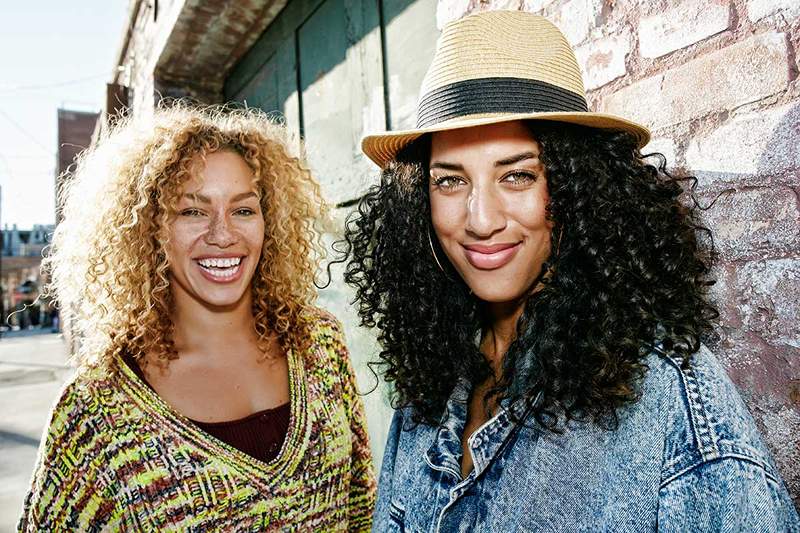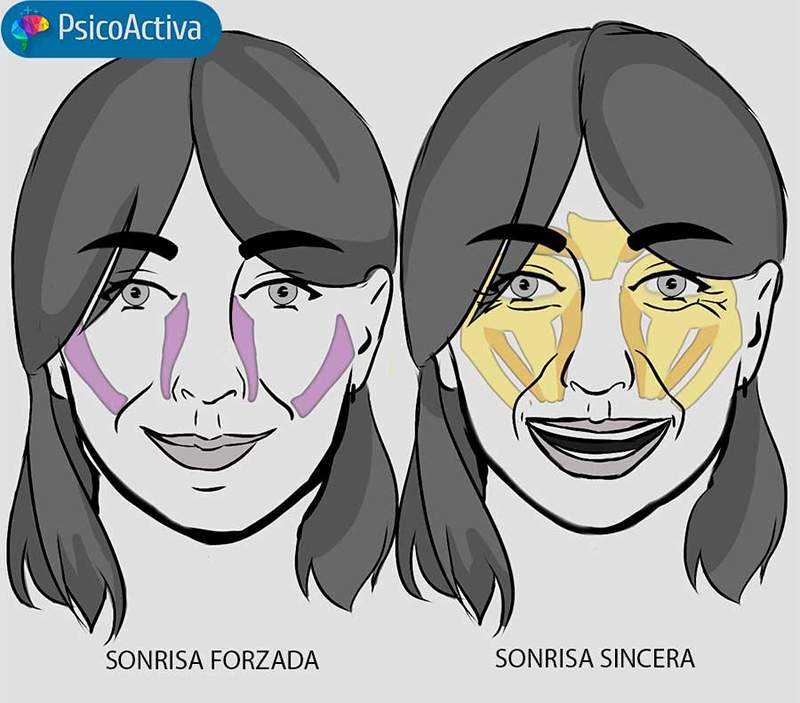Duchenne's smile or how to know if a smile is genuine or false

- 4547
- 383
- Lorenzo West I
Human communication is a complex network of words, tones, gestures and, above all, facial expressions. Among all expressions, the smile stands out as a universal symbol of happiness, welcome and connection. However, not all smiles are created in the same way. Some are the spontaneous reflection of joy, while others may be the product of courtesy or dissimulation. Thanks to the studies of the French neurologist Guillaume Duchenne, we can better understand the difference between a genuine and forced smile. In this article, we will explore Duchenne's smile, its origin and the importance of distinguishing between these two expressions in our daily lives.
Content
Toggle- The origin of Duchenne's smile
- What is Duchenne's smile?
- Why is it important to distinguish between these smiles?
- Limitations and considerations
- References
The origin of Duchenne's smile
Guillaume Duchenne was a neurologist who was interested in electrophysiology, the study of the electrical properties of biological tissues. During the 1860s, Duchenne began experimenting with the electrical stimulation of the facial muscles in their subjects. His goal was better understand how different facial muscles contribute to the various human expressions.
Using a series of experiments, Duchenne identified that certain muscles were responsible for genuine expressions, while others could be activated at will. These observations led him to differentiate between the real and forced smiles.
Duchenne discovered that a real smile, which he thought was the result of a true and spontaneous emotion, included not only the major and minor cygomatic muscle (which raises the corners of the lips), but also the orbicular muscle of the eyes. This last muscle, when contracting, produces wrinkles around the eyes and raises the cheeks.
Duchenne's smile bears the name of Guillaume Duchenne, a nineteenth -century French neurologist who conducted research on the facial expression of emotions. Through his studies, he identified two different types of smiles: the authentic smile and the forced smile.
The most revealing of their findings was that, while most people can activate the muscles around the mouth to smile, Very few can intentionally contract the orbicular muscle of the eyes without feeling a real emotion. This observation led Duchenne to conclude that the smiles that involve this muscle are indicative of authentic emotions.
Duchenne's research was revolutionary in his time and laid the foundations for future studies in the field of psychology and neurology of emotions. Although its methods, especially the use of electrical stimulation, may seem rudimentary or even cruel to current standards, their contribution to the understanding of human expressions is undeniable.
What is Duchenne's smile?
Duchenne's smile is characterized by the simultaneous contraction of several facial muscles. Specifically consists of the High and minor cygomatic muscle contraction near the mouth, which causes the elevation of the lips commissure. But what really distinguishes this smile is Orbicular muscle activation, located near the eyes. When this muscle contracts, it raises its cheeks and produces the wrinkles or "rooster legs" around the eyes.
This Genuine smile is connected to the most primitive area of the brain, which differentiates it from the forced smile, which is more related to the motor cortex, the part of the brain responsible for voluntary movements. Therefore, a way to discern the sincerity of a smile is to observe if the person contracts the muscle around the eyes.

The ability to distinguish between these two smiles can be useful in everyday life and in professional contexts, since it can provide clues about the sincerity or emotional state of a person. However, it is important to remember that The interpretation of facial expressions can be complex and influenced by many factors, so it is not always infallible.
 The Forer effect, when we believe what we want to believe
The Forer effect, when we believe what we want to believe Why is it important to distinguish between these smiles?
As we said, the ability to recognize a Duchenne smile can be of great help in our daily lives. A genuine smile is an indicator of authentic positive emotions, such as joy or content, while Another type of smile can simply be a sign of courtesy, discomfort or even deception.
The smile is a powerful nonverbal communication tool. Often, it is the first sign that we perceive when interacting with someone and can influence our perception and response to that person. Distinguish between a genuine smile (Duchenne smile) and a forced smile can have several practical and psychological implications:
- Confidence establishment: In social and professional situations, a genuine smile can be interpreted as a sign of sincerity and authenticity. When we perceive a Duchenne smile, we are more likely to trust the person who smiles, since we associate this smile with true emotions.
- Social Interactions: Recognizing the difference between these smiles can help us better navigate in social situations. A forced smile may indicate discomfort, tension or courtesy, which may require a different approach to conversation or even change the discussion issue.
- Emotional health: A person who frequently shows forced smiles could be hiding negative emotions or facing emotional problems. Recognizing this difference can be crucial for friends, family and mental health professionals to provide support or intervention.
- Negotiations and sales: In the business world, being able to read nonverbal signals is essential. A seller or negotiator who can identify a genuine smile can have an advantage by better understanding the reactions and emotions of his interlocutor.
- Culture and context: In some cultures, smile, even if it is not genuine, it is a way of showing respect or courtesy. However, in other contexts, a forced smile can be seen with suspicion. Understand the difference and how it is interpreted in different cultures can avoid misunderstandings.
- Personal development: At the individual level, being aware of our own smiles and their authenticity can lead to introspection on our emotional well -being and our relationships. If we are frequently offering forced smiles, it could be a time to reflect on reasons and find ways to improve our emotional sincerity.
Thus, the ability to distinguish between Duchenne's smile and a forced smile is not just an academic curiosity. It has practical applications that can influence the quality of our interactions, our ability to build significant relationships and our understanding of ourselves and others.
Limitations and considerations
While Duchenne's smile provides a valuable tool to discern the authenticity of an expression of joy, it is essential to recognize the limitations and considerations associated with his interpretation, such as: for example:
- Individual variability: Not all people express emotions in the same way. Some individuals may have a natural tendency not to activate the orbicular muscle of the eyes, even when they feel genuine emotions, while others may have perfected the art of simulating a genuine smile.
- Cultural influence: Cultural norms can influence how emotions are expressed. In some cultures, it is common to suppress the demonstration of genuine emotions in public, which could lead to a greater prevalence of forced smiles in certain situations. On the other hand, in other cultures, emotional expressiveness can be more open and varied.
- Situational context: The situation in which a person is found can influence their facial expression. For example, a person could offer a genuine smile in a formal environment due to courtesy, not necessarily because he feels joy.
- Medical and neurological conditions: Some conditions, such as Bell syndrome or certain forms of facial paralysis, can affect a person's ability to show a Duchenne smile. In addition, certain medications or treatments, such as botulinum toxin (Botox), can restrict the mobility of facial muscles.
- Subjective interpretation: Although Duchenne's smile has defined characteristics, the interpretation of any facial expression is ultimately subjective. What a person perceives as a genuine, another could see him as forced, based on his own experiences and prejudices.
- Evolution of facial expression: Over time, a person's ability to express or read emotions can change. Factors such as aging, life experiences or personal development can influence how someone shows or interprets a smile.
Duchenne's smile reminds us of the wealth and complexity of human communication. Although a smile may seem a simple gesture, the stories and emotions behind it are deeply varied. When paying attention to the subtleties of facial expressions, we not only become more insightful in our interactions, but also gain greater appreciation of the depth of human experience.
Emotional Intelligence Test. Discover your strengths and weaknesses
References
- Duchenne de Boulogne, G. B. (1862). Mechanism of human physiognomy or electrophysiological analysis of passions expression. Paris: Jules Renouard.
- Ekman, p., & Frieen, W. V. (1978). Facial action coding system: a technique for the measurement of facial movement. Consulting Psychologists Press.
- « MEQ test to know your chronotype. Are you owl, alondra or hummingbird?
- The ISTJ personality profile of the personality test Myers Briggs el Centinela »

